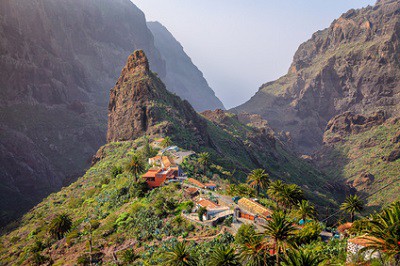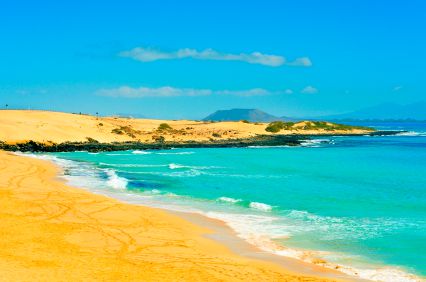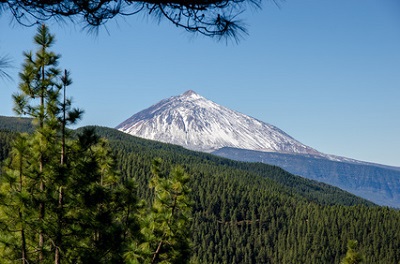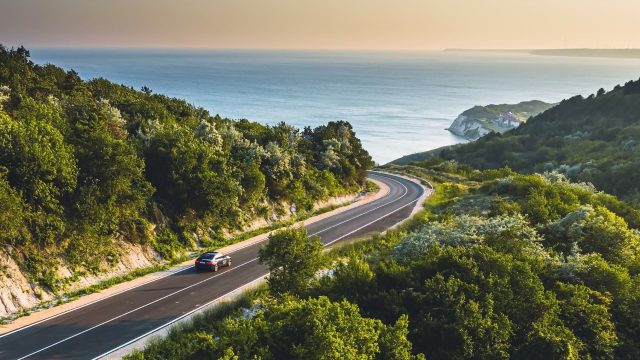In the last 12 months, the Canary Islands (which you can read more on here) have been in the news for numerous reasons. Their tourism chief was worried the Islands may become the new Magaluf! Amazingly the Spanish government approved plans to start oil exploration (fortunately, these plans were stopped). Then a number of protected species had their statuses lowered. Not exactly what you want to hear when you’re planning a holiday and are into green tourism.
 Photo by: zx6r92/Fotolia
Photo by: zx6r92/Fotolia
There is good news though. The whole of Fuerteventura is a Biosphere Reserve, making it a great eco-tourism destination, and that’s just for starters …..
What is a Biosphere Reserve?
Biosphere Reserves are unique ecosystems. They contain plants and animals of unusual scientific and natural interest. They’re used to encourage the conservation of all living things. This is known as biodiversity. They also encourage sustainable use. Not only are they internationally recognized, but they’re nominated by the government and remain under state authority.
In short, they’re recognised as ecologically vital areas, which are protected by the government.
Green tourism in Fuerteventura
Not only is the whole island a Biosphere Reserve, this protection extends up to 3 miles out to sea. There are a number of nature parks on the island and a sand dune system at Corralejo. Many roads also have dedicated cycle lanes. Once you get to your accommodation, cycling is a great way to reduce your carbon footprint. However, it is more than likely that you will have to use your hire car to get to your hotel or apartment.
 Photo by: nito/Fotolia
Photo by: nito/Fotolia
With regards to animal welfare, work is ongoing. The island’s Environmental Agency is trying to reintroduce endangered turtles to the west coast. To achieve this, eggs from loggerhead turtles are imported and placed in artificial nests. When the eggs hatch, the young turtles are kept in special tanks for 2 years until they can be released. It’s hoped that the female loggerheads will return to the same beaches to lay their eggs in a few years’ time. If they do, it will be the first time in over 100 years that turtles have nested here.
With regard to other wildlife, sperm and blue whales are spotted off the coast on a regular basis. The island is also used as a stopover for migratory birds travelling between Africa and Europe via the western route.
Eco-friendly Tenerife
Tenerife is considered to be one of Britain’s top winter sun destinations. It has been using renewable energy for decades. Almost 50% of the island is made up of protected ecosystems, which is impressive! It’s also home to the first zero CO2 emissions village in the world, Casas Bioclimáticas. Teide is the most famous national park here. It’s also the most visited park in Spain. It’s similarities with Mars mean that it’s used for testing equipment. In the future, these will be used for experiments on the red planet. Due to its unique biodiversity, Teide is a UNESCO World Heritage site. It’s one of the must-see spots across the Islands.
 Photo by: frankolor/Fotolia
Photo by: frankolor/Fotolia
Tenerife’s eco-friendly credentials are boosted by the volunteering opportunities here. The Atlantic Whale Foundation focuses on marine conservation. It’s always on the lookout for volunteers.
For golfers, head to Golf Las Américas on the stunning Costa Adeje. It provides a natural habitat for wildlife. You’ll see ducks, geese, swans, and Guinea fowl. This is all dotted around a diverse range of flora.
Responsible travel on Lanzarote
Earlier this year, Lanzarote was awarded Biosphere Responsible Tourism Certification by the Global Sustainable Tourism Council. The award recognises Lanzarote’s hard work over the last 20 years. They’ve helped to establish standards for responsible tourism worldwide.
When it comes to wildlife Lanzarote is, like Fuerteventura, extremely popular with migratory birds. Due to its close proximity to Africa, you’ll see a number of familiar species. Despite its endangered status, the Houbara Bustard nests regularly in the Monumento Natural de Los Ajaches. The more common Barbary Falcon can be found in the stunning Timanfaya National Park.
 Photo by: Jörg Hackemann/Fotolia
Photo by: Jörg Hackemann/Fotolia
Head down to the shoreline and you’ll come across all manner of fish and mammals. This includes dolphins, pilot whales, and if you’re lucky, killer whales. They have all been spotted here, usually chasing tuna. If you want to see a unique local resident, visit Jameos del Agua. Around the lava tubes you may see the tiny albino Munidopsis Polymorpha. This blind, white miniature lobster measures about 2cm and is rather striking.
Endangered animals in the Canary Islands
The following are a small selection of animals found in the Canaries and are listed as endangered:
- Devil Fish
- Angular Rough Shark
- La Gomera & El Hierro Giant Lizard
- Madeira Pipistrelle
- Canary Shrew
- Pale Rock Sparrow
- Houbara Bustard
- Loggerhead Sea Turtle
Eco Hotels & accommodation
There are a number of eco-friendly hotels or Biosphere certified accommodation in the Canary Islands. After peace and quiet? Head inland for remote areas of countryside all to yourself. The coastal areas on the other hand are home to the larger resorts.
Don’t forget to sign up to our newsletter below and follow us on Twitter and Facebook for the latest travel tips and news.
Subscribe to our newsletter
Want our blogs emailed direct to you? Sign up below to get updates featuring our blogs and car hire top tips. Receive the best deals on car hire straight to your inbox.





